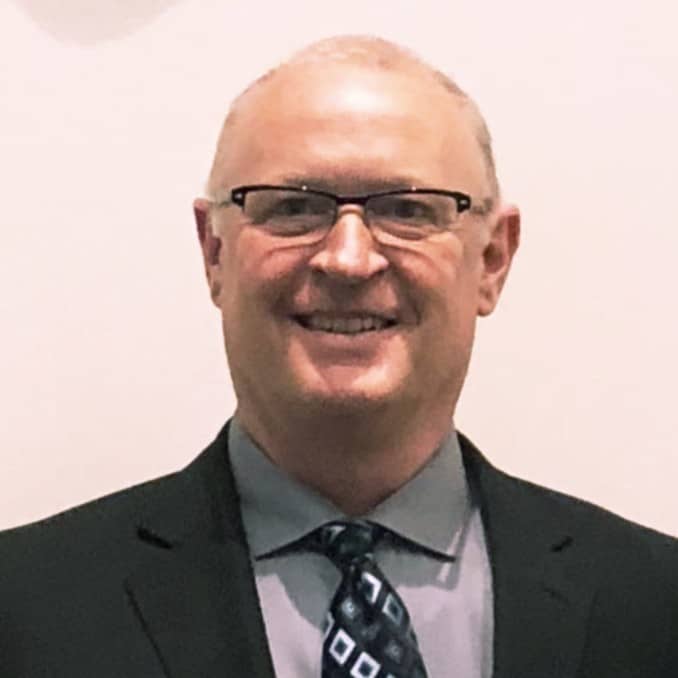Interview: Steve Milliren, Co-founder, KineticCore

Steve Milliren, Co-Founder of KineticCore, was interviewed by Bill Pierce, Publisher, EVinfo.net. In this interview, Milliren shares information about KineticCore, as well as his own personal EV adoption story.
BP: Tell us a little about yourself.
SM: Born in Fort Worth Texas. In my youth, my passions included Acoustics and Solar which drove me to Electrical Engineering. In 1984 I saw a demonstration of AutoCAD and it changed my life. I thought about the hundreds of hours of drafting on the drawing board, and how boring and tedious it was. I devoted my career to all things AutoCAD and started my first company at the age of 25. Later I sold it to a publicly traded company in Canada. I have basically worked in the software industry my entire career, which brought me to two very large A&D programs, the Lockheed Martin F-35 and the Boeing Companies, 787 programs. From those, I learned a lot about composite fabrication, and assembly.
About 4 years ago, I reunited with Dr. James Clegern at a family event, and had a very exciting conversation about Acoustics, Dynamics, and safety of NASA launch vehicles and flywheel energy storage.
BP: Who founded your company? When did that happen?
SM: Dr. James Clegern, on 1-9-19 as KineticCore LLC.
BP: Please list the current leadership and describe their roles.
SM: James is the CEO/CTO, Ryan Nelson heads Business Development, Chuck Clegern is our COO, and finally, Jim Clegern is our CFO. My role is Co-founder advising fund-raising, revenue, licensing, and marketing.
BP: What is your company’s mission?
SM: Great question. To provide the lowest cost, safest, and most durable Energy Storage Systems (yes, batteries) for stationary application which are Earth-friendly, and scalable. We seek to contribute to decrease Energy Poverty while enabling Electrification.
BP: What services/products do you provide?
SM: 30-50 kWh Energy Storage modules which can be connected in large arrays.
BP: I strongly believe that if an employee is treated well, the company benefits from having a greater retention rate. Does your company offer policies such as remote work and unlimited PTO?
SM: Could not agree more. Not only do we work very closely with various universities in Colorado and Texas to attract top talent, but we also provide flex time, a stock incentive program, but we also have a lot of fun, and keep our team focused on the company objective.
BP: How has your company supported sustainability?
SM: Historically, we travel very little, we use Zoom meetings at least 95% of the time, we also designed a product that uses very little water, low mining, that is expected to last 25+ years, and will be recyclable at EOL. Our ‘batteries” are non-toxic and are not prone to fire.
Further, we are enabling EV adoption by storing energy closest to the predicted point of demand, deferring or preventing expensive and ecologically-damaging grid upgrades by “trickle” charging our units over a smaller grid tie.
Finally, we are liberating Lithium to be used for mobility rather than in stationary applications.
About Steve Milliren’s EV adoption journey
BP: How and when did you get into EVs? Which EVs have you owned? What have been your most favorite and least favorite features of them?
SM: We drive a Honda Accord Hybrid and try not to make unnecessary trips. I just built and saved a Ford F-150 Lightning, but am waiting, and waiting, for delivery from Ford. One of my best friends is Buzz Smith, the EV-Angelist, so I hear about each new concept car, truck of van. Last week, I saw the VW ID Buzz truck option which has me questioning my Ford decision.
BP: How has your org promoted EV adoption in the past?
SM: By focusing on Hybrid Charging stations so that more chargers can be found. We are not yet shipping product so our real effect will be felt “down the road” a bit.
BP: What plans does your org have for promoting EV adoption in the future?
SM: Low-cost charging stations that can be relocated easily and also co-located with Gas/Diesel without the fire and explosion risks that Lithium-Ion represents.
BP: What are the biggest barriers to EV adoption in your opinion? How could these barriers be overcome?
SM: Long delivery times, low availability of battery technology, limitation of wiring in existing homes, businesses, and neighborhoods, and for many, higher costs to buy (which are more than offset by operational costs over time).
BP: What do you believe government could do to promote EV adoption that they are not currently doing?
SM: Great question. Step back from the oil and gas subsidies which artificially lower cost per gallon while also getting serious about carbon debits and credits. Get aggressive on low hanging fruits like delivery vehicles, school buses, locomotives. When an EV is owned by the local governments (city, state, county) realize that V2G is a great deal as any battery asset can be used to balance the grid supply vs. demand. Allow rest stops to have charging stations and when appropriate, generate with solar, wind, or hydro. Many ideas here!
BP: How could middle class and lower income families be assisted in adopting EVs?
SM: Free charging and ride sharing with EV powered vehicles. Current tax incentives are good, but they don’t yet take the investment to be competitive with a used car. As they also turn off other fossil fuel devices like gas heaters, gas water heaters, gas cooking provide an incentive to reward the household for 100% electrification. Many will still have an ICE vehicle that in most states must be inspected each year. Based on MPG, and miles driven, charge more to that vehicle to better align cost with tailpipe emissions.
Thank you Steve Milliren for taking the time to speak with us. We greatly appreciate your efforts in EV adoption and your time.

Electric Vehicle Marketing Consultant, Writer and Editor. Publisher EVinfo.net.
Services